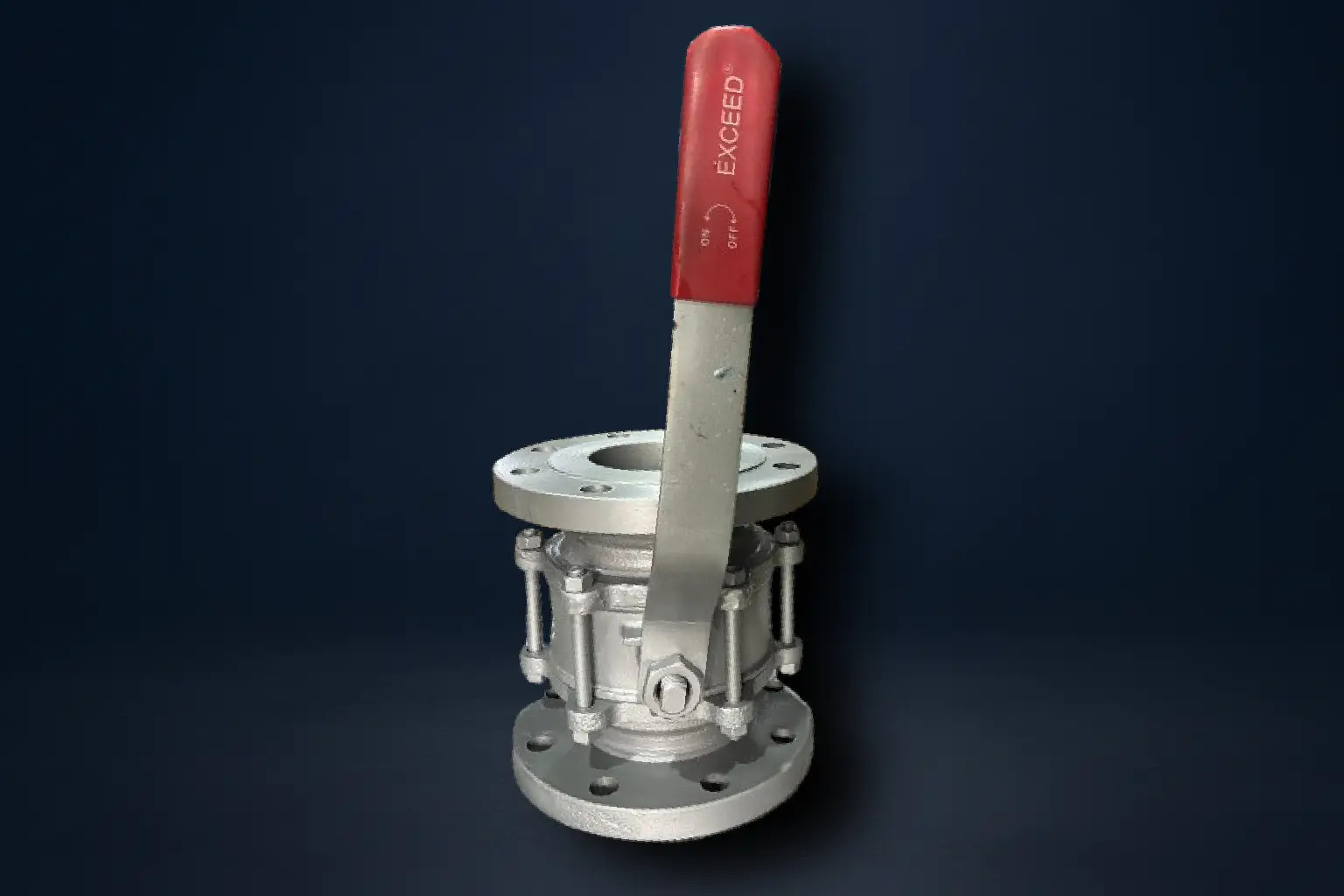Ball Valves
Ball valves are quarter-turn valves designed for fast and reliable shut-off in fluid systems. They use a spherical disc (the “ball”) with a central hole (bore) that controls flow. When the ball’s bore is aligned with the pipeline, the valve is fully open, allowing unobstructed flow. A simple 90° turn of the handle or actuator rotates the ball, positioning the bore perpendicular to the line and completely stopping flow.
This design provides excellent sealing, minimal pressure drop, and easy operation, making ball valves one of the most widely used valves in industries such as oil & gas, water supply, chemical processing, and power generation. They are especially valued where tight shut-off, frequent operation, and low maintenance are required.
Exceed Ball Valves are built with precision-engineered balls and seats for bubble-tight sealing, smooth operation, and long service life. With robust construction and options for manual, pneumatic, or electric actuation, Exceed ensures reliable performance across demanding applications.
Technical Details:
Construction:
- 3 Piece/2 Piece
- Blowout Proof Stem
- Floating Ball
- Soft Seated
- Full Bore
Manufacturing Std.: BS 5351
Testing & Inspection Std.: API 598
Face to Face: ASME B16.10
End Connections: ASME B16.5 RF
Engineering Options:
- Available on request with gearbox or pneumatic actuator
- Speacial materials on request
- Solid Ball on request
- Remote operations on request
- Valve design provides for interchangeability of items
- Glass filled PTFE Seat on request
- Sealing materials can be given in grofoil

